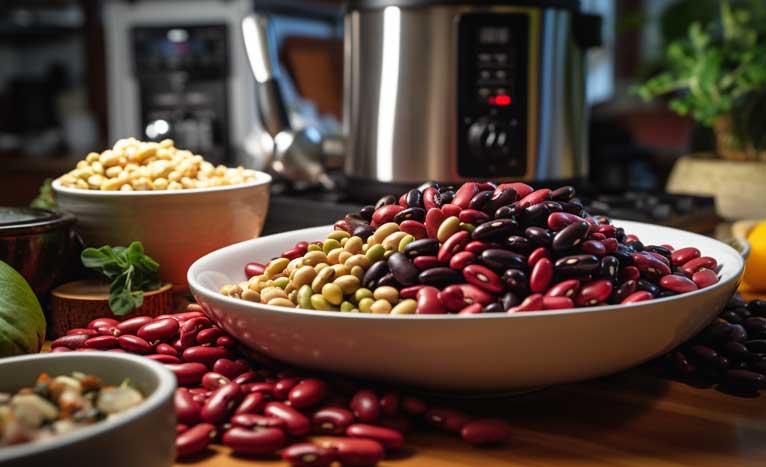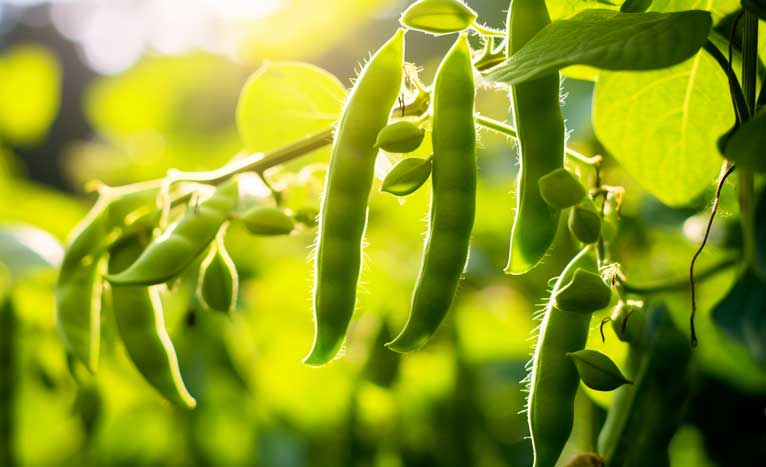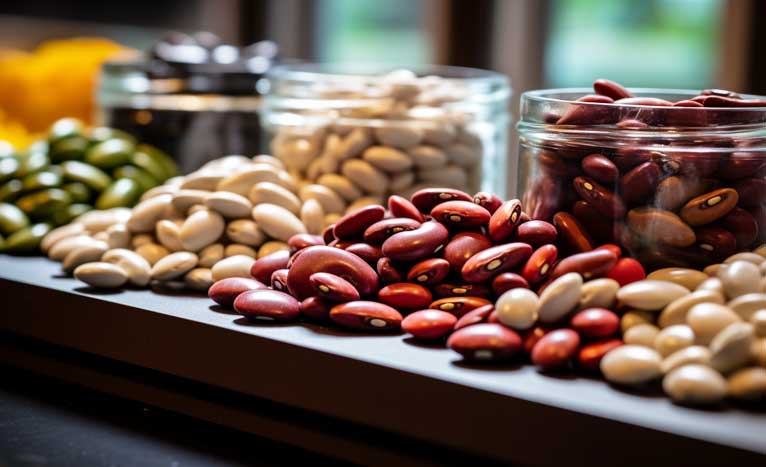Beans are a versatile and nutritious vegetable that can be grown easily in home gardens. Whether you prefer pole beans, bush beans, or starting from bean seeds, this blog will provide you with step-by-step instructions on how to successfully grow beans. From planting to harvesting, we will cover all the essential aspects of bean cultivation.
I have loved growing beans on my homestead! Seriously, they are so easy to grow, so don’t be intimidated! Plus, because beans are so easy to grow, they will give you an abundance of beans you can use in recipes or add to your food storage. So, let's dive in and discover how to grow beans and enjoy a bountiful harvest!

Let’s Dive into bean growing!
Beans are a warm-season crop that belongs to the legume family. They are rich in protein, fiber, vitamins, and minerals, making them a nutritious addition to any diet. Beans come in different varieties, such as pole beans and bush beans, each with its own unique growth habit. By following the right techniques and providing proper care, you can grow an abundant harvest of beans in your garden.

Choosing the Right Bean Variety
Selecting the right bean variety is crucial for a successful harvest. Consider factors such as the available space in your garden, preferred taste, and growth habit. Pole beans are known for their climbing nature and require trellises or supports, whereas bush beans grow in compact bushes and do not need additional support.
Additionally, choose bean seeds that are well-suited for your local climate to ensure optimal growth.
The best way to choose what beans will be best for you is to ask your local gardeners or neighbors. They may be willing to share their varieties and it’s good to ask local because then you will know what grows good in your area. Visit the local nurseries as well because they will sell what is best-suited for your area.
You can explore different online seed stores for beans, but nothing will beat locally grown beans in my opinion. But that is the fun of gardening—you can experiment with different varieties to see what you like!
Preparing the Soil
Before planting, it's important to prepare the soil properly. Beans thrive in well-draining soil with a pH level between 6.0 and 7.0. Begin by removing any weeds, rocks, or debris from the planting area. Loosen the soil using a garden fork or tiller, breaking up large clumps. Incorporate organic matter like compost or aged manure to improve soil fertility and drainage.
Planting Bean Seeds
Plant bean seeds directly in the garden once all chances of frost have passed and the soil has warmed up. Create rows or mounds, leaving enough space between each plant to allow for proper growth. Follow the instructions on the seed packet for the recommended planting depth and spacing. Plant the seeds with the pointed end facing down and cover them gently with soil.
It is so important to follow the directions on the packet of seeds that you receive. Different varieties will have varying instructions, so it is important to follow their guidance for a successful crop.
Caring for Bean Plants
Once the bean seeds have sprouted, it's important to provide them with proper care. Ensure the plants receive at least 6 to 8 hours of direct sunlight daily. Regularly water the plants, keeping the soil evenly moist but not waterlogged. Mulching around the plants can help conserve moisture and suppress weed growth. Monitor the plants for any signs of pests or diseases and take appropriate action if necessary.
Supporting Pole Beans
If you're growing pole beans, providing support is essential. Install trellises, stakes, or a bean tower before the plants start climbing. Train the vines onto the supports to prevent them from tangling and to promote better air circulation. Regularly check and adjust the supports as the plants grow taller. I used natural trellises this year like sticks and branches and it worked wonderfully! You don’t have to buy expensive trellises from the store, make your own by using what is around you. Have any old fencing or cattle paneling? Use that!
I personally chose to do pole beans, which means I had to trellis them—not a big deal. I like this because I felt like I was able to harvest more than if I did a bush because they grew up instead of out, so I was able to plant more plants in a small area.
Watering and Fertilizing
Beans require consistent moisture throughout their growing period. Water the plants deeply once or twice a week, ensuring the water reaches the root zone. Avoid overhead watering, as it can lead to diseases. Apply a balanced organic fertilizer according to the manufacturer's instructions to provide the plants with essential nutrients.
Another important part of watering your garden is to water in the cool hours of morning or evening. If you water your plants mid-day it can scorch the plant as the sun is at its highest and hottest, so while the water dries it will burn your plants and crop!
Controlling Weeds and Pests
Regularly weed the bean bed to prevent competition for nutrients and reduce the risk of pest infestations. Mulching can help suppress weed growth. Monitor the plants for common pests such as aphids, bean beetles, or spider mites. Consider using organic pest control methods or insecticidal soaps to protect your plants.
Harvesting and Storage
Harvesting time varies depending on the bean variety and desired use. For fresh consumption, harvest pole beans when they are young and tender, before the seeds fully develop. Bush beans can be harvested when the pods are plump but haven't started to dry out. To save seeds for future planting, allow the pods to mature and dry on the plants. Store harvested beans in a cool, dry place in airtight containers to maintain their quality.
Common Bean Growing Problems
Despite their relative ease of cultivation, beans can face a few challenges. Some common issues include fungal diseases, such as powdery mildew or rust, which can be controlled by proper plant spacing and good air circulation. Bean beetles and aphids are common pests that can be managed through vigilant monitoring and early intervention.
If you experience these problems, ensure to rotate where you are planting your beans the following year so it throws off the pests!
Go grow some beans
Growing beans can be a rewarding experience, providing you with a fresh supply of this nutritious vegetable throughout the growing season. By following the guidelines outlined in this article, you can successfully cultivate pole beans, bush beans, or grow beans from seeds in your garden. Remember to choose the right bean variety, prepare the soil adequately, provide proper care, and address any potential issues promptly. Enjoy the process of growing your own beans and reap the delicious rewards!
FAQs
How long does it take for beans to grow?
The time it takes for beans to grow depends on the variety. Generally, pole beans take around 60-70 days from planting to harvest, while bush beans can be ready for harvest in 50-60 days.
Can I grow beans in containers?
Yes, beans can be grown in containers as long as the containers are large enough to accommodate their root system. Choose bush bean varieties for container gardening.
How often should I fertilize bean plants?
It's recommended to fertilize bean plants once at planting and then again when they start producing flowers. Use a balanced organic fertilizer according to the package instructions.
Do beans require full sun?
Yes, beans thrive in full sun and require at least 6 to 8 hours of direct sunlight daily for optimal growth and production.
Can I save bean seeds for the next season?
Yes, you can save bean seeds for the next season. Allow the pods to mature and dry on the plants, then collect and store the seeds in a cool, dry place.

